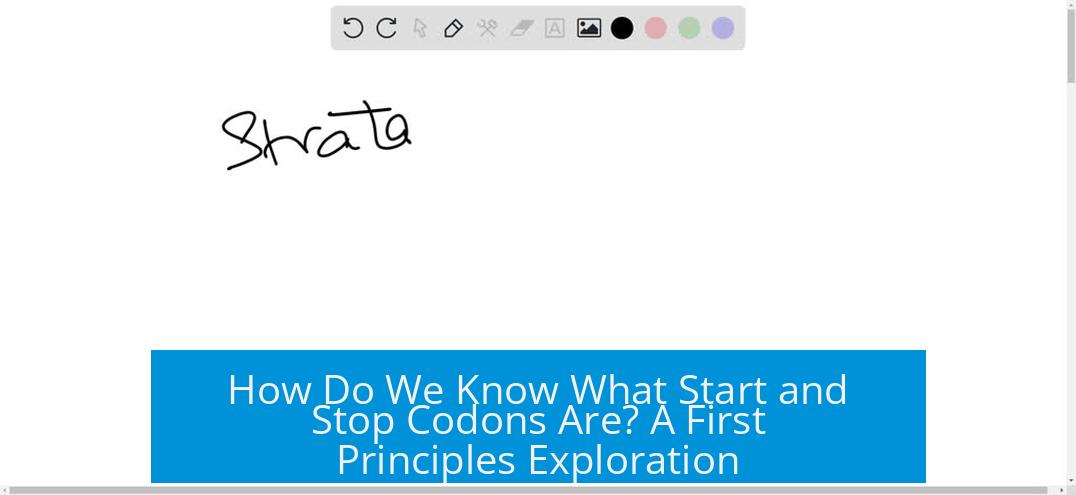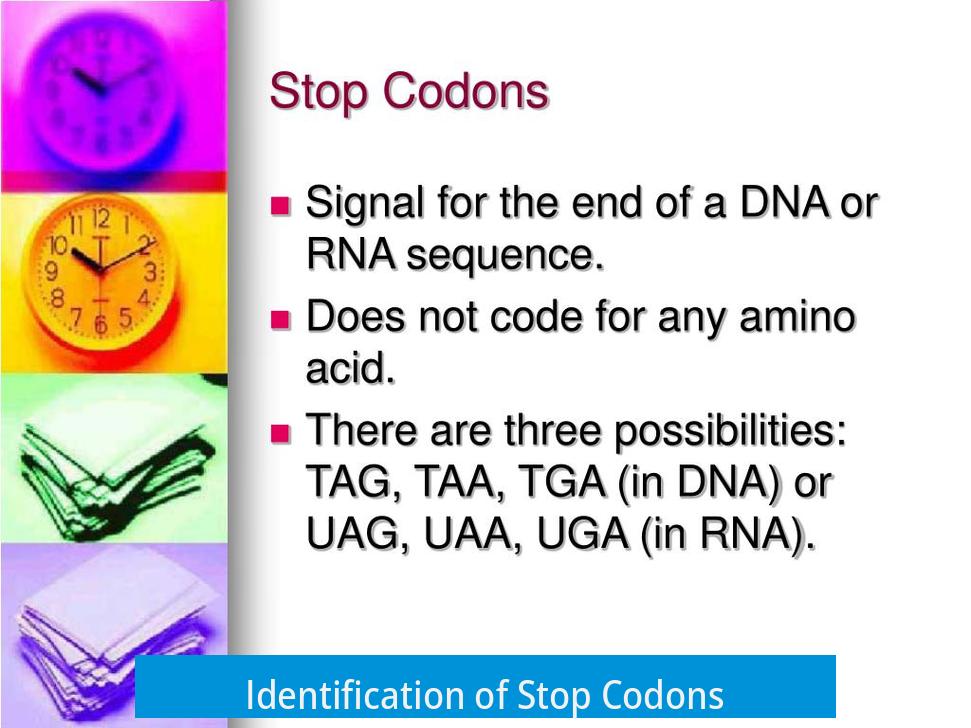How Do We Know What Start and Stop Codons Are? A First Principles Exploration

The determination of start and stop codons emerged through meticulous experimental work, employing synthetic RNA sequences and cell-free bacterial extracts, revealing that specific triplets signal the beginning or end of protein synthesis. This knowledge results from understanding the genetic code’s triplet nature and the ribosome’s role in decoding mRNA.
Historical Experimental Foundations
Early Discovery of Codons
The decoding of codons commenced with experiments differentiating whether proteins synthesized directly from DNA or via RNA intermediates. Researchers created mixtures containing all twenty amino acids, each tube featuring one radioactive amino acid, E. coli cytoplasm, and synthetic nucleic acids.
- They synthesized DNA strands from thymine alone and RNA strands from uracil alone.
- Only tubes with synthetic RNA produced proteins, specifically chains of phenylalanine.
- This pinpointed RNA as the template for protein synthesis and led to the identification of codons.
This step was a critical first achievement; it confirmed RNA dictates amino acid sequences and that individual nucleotide triplets correspond to specific amino acids.
Use of Synthetic Repeated Triplets and Ribosome Assays
Further elucidation occurred using synthetic RNA molecules containing repeated triplet sequences, such as CAUCAUCAU repeats. Scientists added these to E. coli cell-free extracts rich in ribosomes and transfer RNA (tRNA).
- High magnesium concentrations facilitated random initiation of translation at any triplet position.
- Researchers observed the synthesis of three distinct peptides corresponding to three possible reading frames from the repeated sequence.
- However, when RNA repeats included known stop codons (UGA, UAA, UAG), no polypeptide formed from that reading frame, indicating translation termination.
These assays demonstrated the triplet nature of coding and the existence of specific codons that halt protein synthesis.
Identification of Stop Codons

In subsequent experiments, incorporation of stop codons in synthetic RNA caused premature termination of peptide formation. This supported the hypothesis that certain triplets instruct the ribosome to release the growing polypeptide chain rather than add amino acids.
Identification of Start Codons
Discovering start codons required adjusting experimental conditions to closer mimic physiological environments.
- Lowering magnesium ion concentration eliminated random initiation of translation in cell-free assays.
- Translation only started when RNA contained repeats of the codons AUG or GUG.
- In bacteria, GUG was recognized as a less common alternative start codon.
Repeats of AUG led to peptides of methionine residues, reflecting its role as a universal initiator of protein synthesis.
Underlying Molecular Principles and the Triplet Code
Experiments confirmed that genetic information is encoded in triplets of nucleotides, each coding for a single amino acid or a stop signal. This triplet nature explained how sequences of four nucleotides (adenine, uracil, guanine, cytosine) could specify twenty amino acids plus start and stop signals.
| Feature | Description |
|---|---|
| Triplet Codon | Three consecutive nucleotides that specify one amino acid or a stop signal |
| Start Codon | AUG (codes for methionine), signals the beginning of translation |
| Stop Codons | UAA, UAG, UGA; signal termination of polypeptide synthesis |
Modern Understanding and Confirmation
Today, start and stop codons are well-established biological concepts, validated across all domains of life. In eukaryotes, methionine is the amino acid encoded by the sole start codon AUG. Many bacteria can employ GUG as an alternative start codon. The three stop codons terminate translation universally.
These codons are identifiable directly from mRNA sequences:
- The first codon of nearly all coding sequences is AUG, specifying methionine.
- Stop codons appear at the end of open reading frames to signal translation termination.
- The reading frame is maintained by progressing in groups of three nucleotides between the start and stop codons.
Contributions of Key Scientists and Literature
The dissection of start and stop codons owes much to pioneers such as Francis Crick, Marshall Nirenberg, and Har Gobind Khorana. Their Nobel-recognized work in the 1960s laid the foundation for genetic coding principles.
- Nirenberg’s lab was crucial in deciphering the genetic code using synthetic RNAs.
- Crick advanced the understanding of code nature, triplets, and protein synthesis mechanisms.
- Khorana synthesized specific RNA sequences to map codon meanings precisely.
Readers can explore detailed historical accounts and experimental data in Khorana’s 1968 Nobel Lecture available online.
Summary of Experimental Approaches to Discover Start and Stop Codons
- Radioactive labeling of amino acids with synthetic DNA/RNA templates helped establish RNA as the protein template.
- Cell-free translation assays with synthetic repeating triplets revealed triplet codon structure and stop codons.
- Adjusting magnesium levels clarified the physiological initiation of translation, identifying the start codon.
- Synthesis of defined RNA sequences confirmed stop codons terminate translation within reading frames.
- Subsequent sequencing of mRNA confirmed these codons’ positions and functions in real genes.
Key Takeaways
- The genetic code is interpreted in triplets, each coding for an amino acid or a stop signal.
- Start codons (primarily AUG) initiate protein synthesis by signaling ribosome binding and first amino acid incorporation.
- Stop codons (UAA, UAG, UGA) terminate translation by causing ribosome release from mRNA.
- These codons were identified through pioneering in vitro experiments using synthetic RNAs and bacterial extracts.
- Adjustments of experimental conditions revealed physiological translation initiation and termination signals.
- Discoveries were validated by sequencing mRNA and confirmed universally in diverse organisms.
How were start and stop codons first identified experimentally?
Scientists used synthetic RNA sequences and bacterial extracts in lab tests. By exposing ribosomes to repeated triplets like CAUCAU or AUGAUG, they observed which amino acids were produced and where translation stopped or started. This showed which triplets acted as start or stop signals.
What role did synthetic repeated triplets play in discovering codons?
Repeated triplets allowed researchers to see how ribosomes read RNA in sets of three bases. If a triplet produced a polypeptide, it was a codon. If translation stopped at a triplet, it was a stop codon. This helped confirm the triplet nature of the genetic code.
Why is the start codon often AUG, and how was this determined?
At normal magnesium levels, ribosomes only began translation on RNA sequences containing AUG or GUG repeats. AUG codes for methionine and signals the start of protein synthesis. This was found by comparing peptides made from RNAs with different repeated triplets.
How do stop codons halt protein synthesis?
Stop codons like UAG, UGA, and UAA cause ribosomes to cease translation. Experiments showed that when these sequences occurred in synthetic RNA, polypeptide formation ended immediately. These codons do not code for amino acids but signal termination.
What experiments revealed the triplet nature of the genetic code?
In high magnesium conditions, ribosomes started translating at all possible frames on repeated triplets, yielding three different polypeptides from the same sequence. This confirmed that RNA codons are read in triplets, not one or two bases at a time.
Where can I find original research about start and stop codons?
Look into Nobel lectures and papers by scientists like Har Gobind Khorana, Francis Crick, and Marshall Nirenberg. Khorana’s 1968 lecture is particularly informative and accessible online via the Nobel Prize website.





Leave a Comment